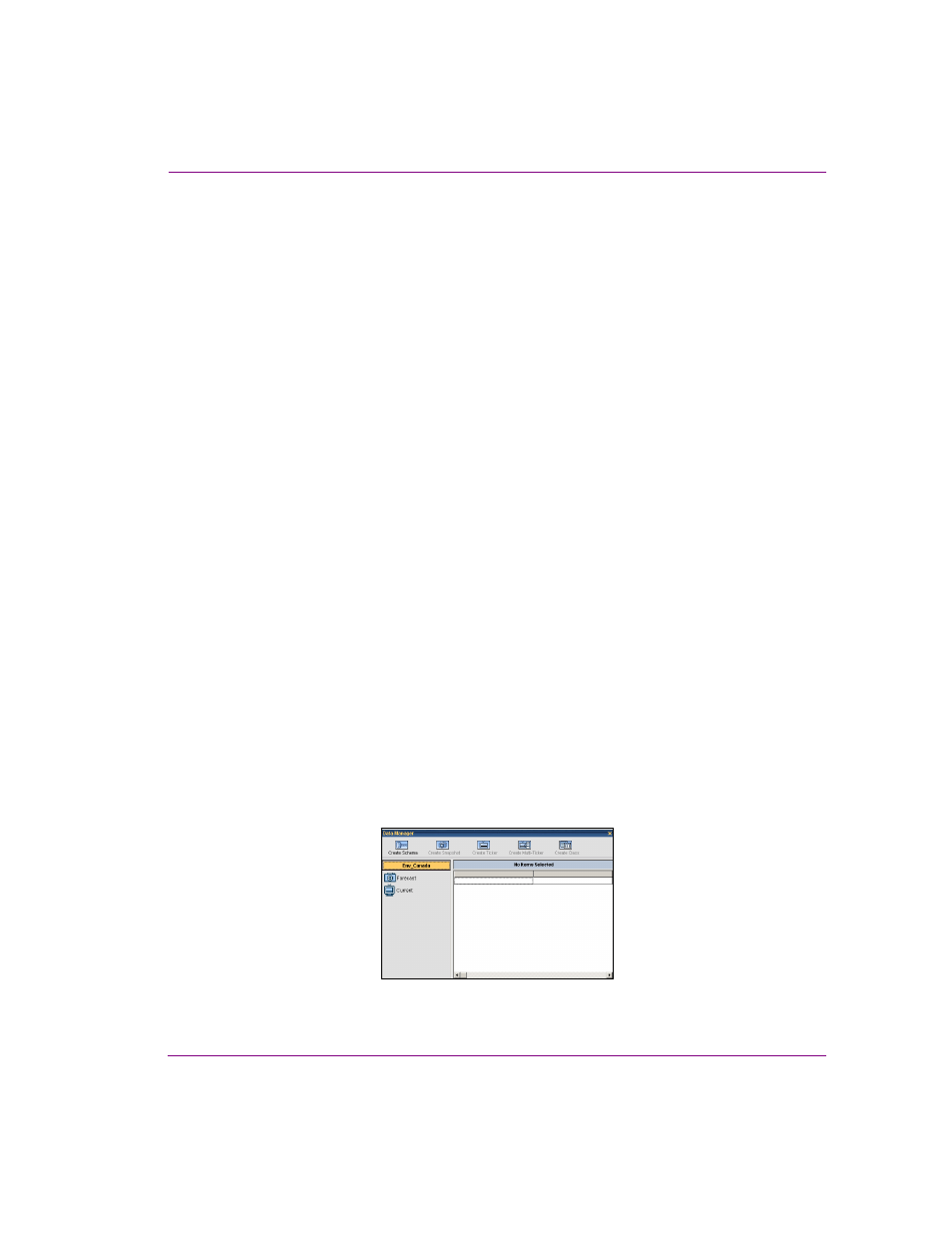Grass Valley Xstudio Vertigo Suite v.4.10 User Manual
Page 238

Xstudio User Manual
9-15
Linking objects to a data source
12. Make a selection from the S
ELECT
D
ATA
S
OURCE
drop-down list.
13. Select one or more tables from the SELECT TABLE(S) section (hold down the SHIFT
or CTRL key for multiple selections).
14. To change the titles of selected columns, click the E
DIT
C
OLUMN
N
AMES
button. When
the C
OLUMN
H
EADERS
dialog box displays, click in the column name to be changed to
make the text editable.
15. To have only specific records returned, use the S
ET
K
EY
area. To use stock information as
an example, you could display only stocks that have gone up or down by $1.00 or more.
Each line in the Set Key area represents a filter on the available data and is expressed
as a condition on the value of a column. Select a column name and operator from the
drop-down list in their respective columns. The value can either be entered as a
constant or can be set to the value of another column by choosing a column name from
the drop down list in the V
ALUE
column. Alternatively, it is possible to set a DYNAMIC
VALUE by choosing
16. To sort data, use the S
ET
S
ORTING
O
RDER
table. Click in the N
AME
column to display a
drop-down list that contains all column names of the selected tables in the data source.
Once the column has been selected, click in the O
RDER
row to display the drop-down
list that contains your two choices: A
SCENDING
and D
ESCENDING
.
17. Enter the time interval in seconds that will separate data refreshes in the R
EFRESH
R
ATE
field.
Or, select the N
EVER
R
EFRESH
check box. This deactivates the R
EFRESH
R
ATE
field.
18. The G
ARBAGE
C
OLLECT
field the time interval at which the system will purge outdated
instances of data variables.
19. Enter the maximum number of rows to be returned by the query in the M
AX
R
OWS
field.
This will ensure that the system’s performance will not be hampered by the retrieval of
unnecessarily large tables. If you would prefer that there be no limit on the number of
rows returned by the query, enter 0.
20. The value of the S
TALE
I
NTERVAL
field represents the frequency at which the system
checks to see if the data has been updated. If the data has not been updated with the
specified time, a warning is sent to the Xstudio log file. Note that the Stale Interval value
must either be left blank (default) or be a value greater than the Refresh Rate value.
21. Click OK.
This closes the T
ICKER
S
ETTINGS
dialog box and brings you back to the Data Manager.
The new ticker is listed at left under its schema.
Figure 9-10. New ticker listed under the schema in the Data Manager
